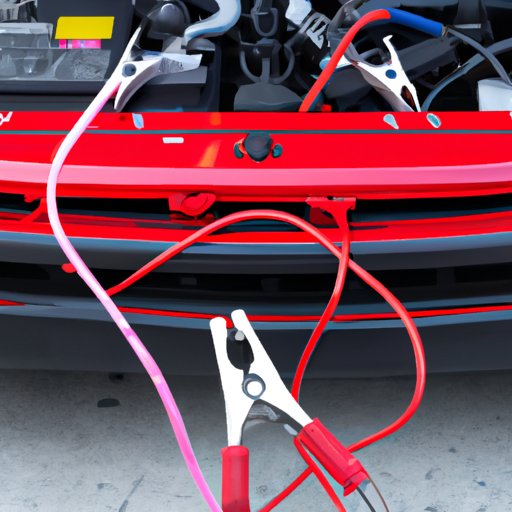Jump-starting a car is an essential skill that many drivers should be familiar with. Understanding the amount of electrical current (measured in amps) required for a successful jump start is crucial. This guide will walk you through everything you need to know about jump starting a vehicle, including how many amps you need, the tools required, and practical tips for a safe and effective jump start.
Understanding Amperage
Amps, or amperage, represent the amount of electrical current flowing through a circuit. When it comes to jump-starting a car, the necessary amperage varies based on several factors, including the size of the engine and the condition of the battery. For most standard vehicles, a jump starter or booster pack with an output of around 400 to 600 amps should suffice. However, larger engines, such as those found in SUVs and trucks, may require a higher amperage—often closer to 1000 amps. This variance underscores the importance of understanding your vehicle’s unique requirements.
The Mechanism Behind Jump Starting
When you jump-start a car, you essentially provide an external power source (typically another vehicle’s battery) to charge your car’s dead battery. The connections between the batteries allow the current to flow from the donor battery to the depleted one, reigniting the engine’s ignition. It’s a straightforward yet sensitive process, as improper connections or inadequate amperage can lead to complications, including electrical system damage or even physical hazards.
Choosing the Right Equipment
To ensure a smooth jump start, one must possess the right tools. Here’s what you need:
- Jump Starter/Booster Pack: A portable jump starter is a convenient tool that can save you in emergencies. They often come with built-in safety features and varying amp outputs.
- Jumper Cables: These insulated cables are vital for connecting the two batteries. For optimal performance, look for cables with at least 4-gauge thickness.
- Safety Gear: Gloves and safety goggles are recommended to protect yourself from acid splash and sparks.
When selecting jumper cables, it’s wise to consider their length and thickness. Longer cables (25 feet or more) provide flexibility in maneuverability but may have a higher resistive loss. Hence, thicker cables are generally more effective as they can carry greater amperage with minimal voltage drop.
Steps for Successfully Jump Starting a Car
Now that you have a clearer picture of what equipment to use, here’s a step-by-step guide on how to jump-start a car effectively:
- Positioning the Vehicles: Park the working vehicle (donor vehicle) next to the vehicle with the dead battery, ensuring that both are in “park” mode, and their engines are turned off.
- Connecting the Jumper Cables: Begin with the positive cable (often red). Connect one end to the positive terminal of the dead battery and the other end to the positive terminal of the donor battery. Next, connect the negative cable (usually black) to the negative terminal of the donor battery, then attach the other end to an unpainted metal surface on the car with the dead battery (this grounds the circuit).
- Starting the Donor Vehicle: Start the donor vehicle and let it run for a few minutes. This allows the dead battery to draw enough charge.
- Attempting to Start the Dead Vehicle: Try starting the vehicle with the dead battery. If it doesn’t start immediately, wait a few more minutes and try again.
- Disconnecting the Cables: Once the dead vehicle starts, reverse the order of cable disconnection—negative first, then positive.
- Keep the Engine Running: Allow the revived vehicle to run for at least 15 minutes to continue recharging the battery.
Common Pitfalls to Avoid
Jump-starting comes with its own set of hazards. A few common mistakes to avoid include:
- Incorrect Cable Connection: Always ensure cables are connected in the correct order. Reversing polarity can lead to extensive damage.
- Neglecting Safety Precautions: Always wear protective gear and keep the batteries free from any corrosion or dirt.
- Using Inadequate Amperage: Make sure your jumper cables or jump starter are rated for your vehicle’s needs. Using insufficient amps can lead to frustration and potential failure to start the vehicle.
Final Thoughts
Jump-starting a car is a straightforward process, but it requires attention to detail and adherence to safety protocols. Understanding how many amps are required and having the right tools at hand can make the difference between a minor inconvenience and a major headache. With practice, anyone can become proficient at jump-starting, ensuring that even in the face of a dead battery, you can turn chaos into control. Keep this guide in mind, and you will maneuver through future jump-starting endeavors with newfound confidence.
